I've been building AI applications for a while now, and trust me, the right tools make all the difference. AI is impressive, but the frameworks behind the scenes are what we developers use to turn that potential into reality. In this article, I will break down the top AI frameworks for 2024 that will help us build even more fantastic and more powerful AI applications. These things offer many features, are flexible to work with, and can handle big jobs, so get ready to up your AI game!
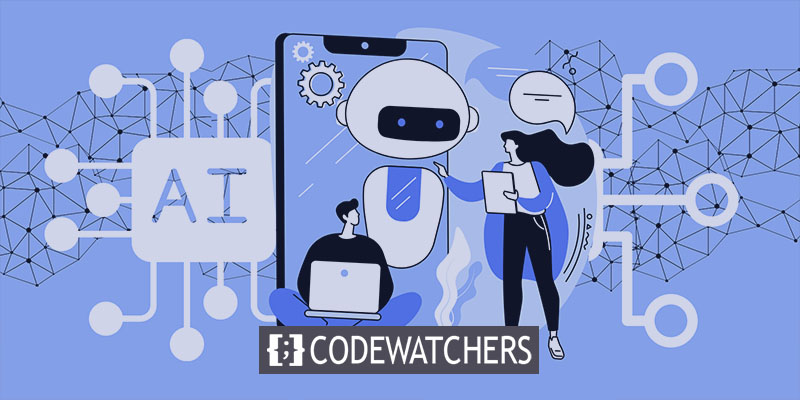
AI Frameworks
AI frameworks are like my toolbox for building intelligent applications. They give me pre-made tools and instructions (libraries and APIs) to save time and effort. Plus, they hide the super complex stuff (algorithms) so I can focus on making my AI even better.
AI frameworks foster a collaborative environment, providing a common set of tools and a shared coding language. This facilitates the exchange of ideas and the joint creation of remarkable AI applications. Ultimately, AI frameworks catalyze developers like me to materialize powerful and innovative AI!
AI Frameworks Role in Developing Apps
As an AI developer, I find frameworks like TensorFlow and PyTorch to be my secret weapons! They provide a structured environment to build, train, and deploy my models. Instead of getting bogged down in complex coding, these frameworks offer pre-built tools and libraries for data prep, model creation, and optimization.
They even handle fancy stuff like distributed computing to train on massive datasets faster. AI frameworks take care of the nitty-gritty details so I can focus on what matters: creating powerful and innovative AI solutions!
Benefits Of Using AI Framework For Creating Apps
Building intelligent apps can be challenging! There's a lot to consider, from complex algorithms to massive datasets. But that's where frameworks come in as my secret weapons. Here's how frameworks make developing intelligent apps smoother:
- Streamlined development: Frameworks come with pre-built tools and templates, allowing for quicker and more efficient development. Developers don't need to start from scratch and can focus on the app's unique features.
- Increased scalability: Frameworks enable building apps that handle large amounts of data. They can quickly scale up or down based on demand, which is crucial for intelligent apps with complex data processing needs. Frameworks provide the infrastructure for developers to build robust and scalable apps.
- Improved quality and reliability: Frameworks promote well-structured, maintainable, and secure apps by following established guidelines and best practices. Built-in testing and debugging tools help identify and fix issues early on, leading to higher-quality apps with fewer errors.
Top 10 AI Frameworks
The frameworks we will talk about can automate tasks, cut manual work, boost accuracy, save time and money, and unlock valuable insights from data. Let's have a look at them.
Tensorflow
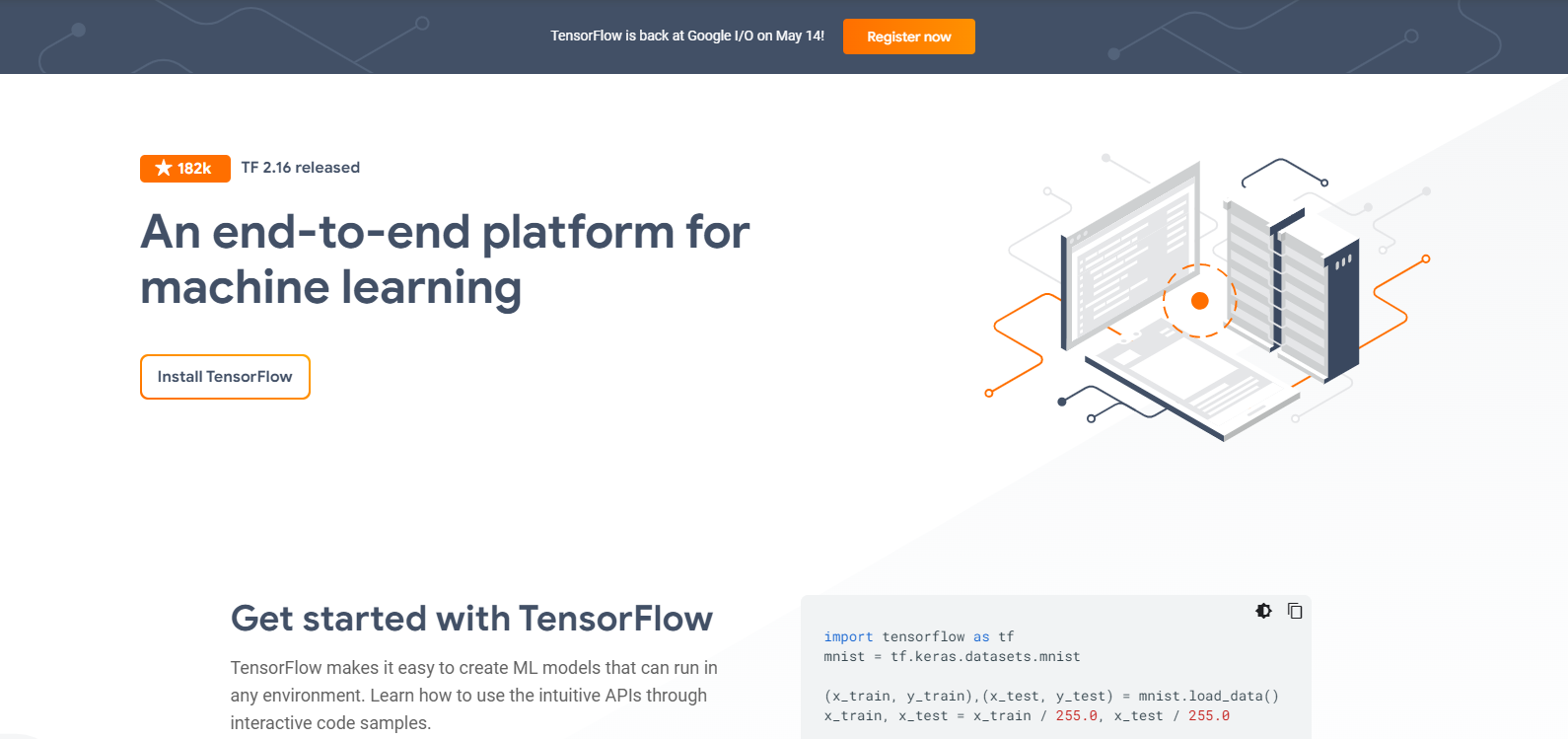
TensorFlow is a powerful open-source framework developed by Google for building and deploying machine learning models. It acts as a foundation, providing a structured environment with tools and libraries to simplify complex tasks like data processing, model creation, and training. TensorFlow empowers developers to focus on the unique intelligence they want to add to their applications, rather than getting bogged down in the nitty-gritty details of low-level coding.
Key Features
- Fast Prototyping
- Flexible Deployment
- Scalable Training
- Large Community
- Pre-Built Algorithms
- Visualizations Tools
- Customizable Architecture
- Open-Source & Free
Scikit-learn
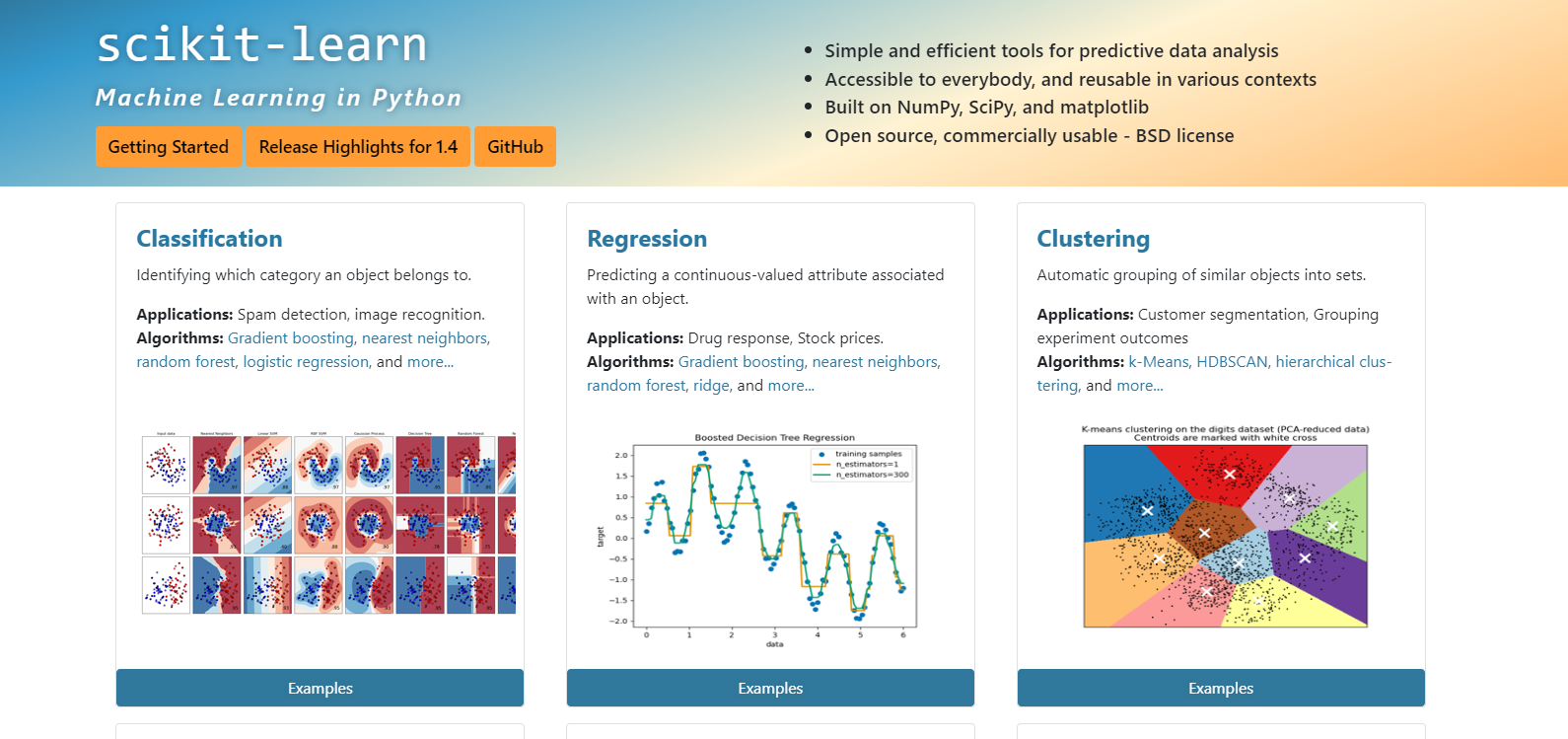
Scikit-learn isn't quite a full-fledged AI framework like TensorFlow or PyTorch, but it serves as a powerful and accessible library within the Python ecosystem. Designed specifically for machine learning tasks, Scikit-learn offers a user-friendly interface and a comprehensive collection of algorithms for various tasks. These include classification (think spam filtering or image recognition), regression (used for predicting continuous values like stock prices), clustering (useful for customer segmentation), and dimensionality reduction (helpful for data visualization).
The beauty of Scikit-learn lies in its simplicity and ease of use. While it may not be ideal for building complex deep learning models, it excels in prototyping and tackling common machine learning problems. Let's explore some of the key benefits that make Scikit-learn a valuable tool for developers.
Key Features
- Easy to Learn
- Fast Prototyping
- Diverse Algorithms
- Preprocessing Power
- Model Evaluation
- Scalability
- Well Documented
- Open Source Community
Caffe

Caffe is an open-source deep-learning framework known for its exceptional speed and efficiency. It's particularly well-suited for computer vision tasks and deploying models on resource-constrained devices. Caffe offers a modular architecture that allows developers to define and combine different neural network layers easily. Additionally, it boasts a rich library of pre-defined layers, enabling the creation of complex deep-learning architectures.
Key Features
- Speed & Efficiency
- Modular Design
- Open-Source
- Large Community
- GPU Support
- Python Integration
- Pre-trained Models
- Active Development
Keras
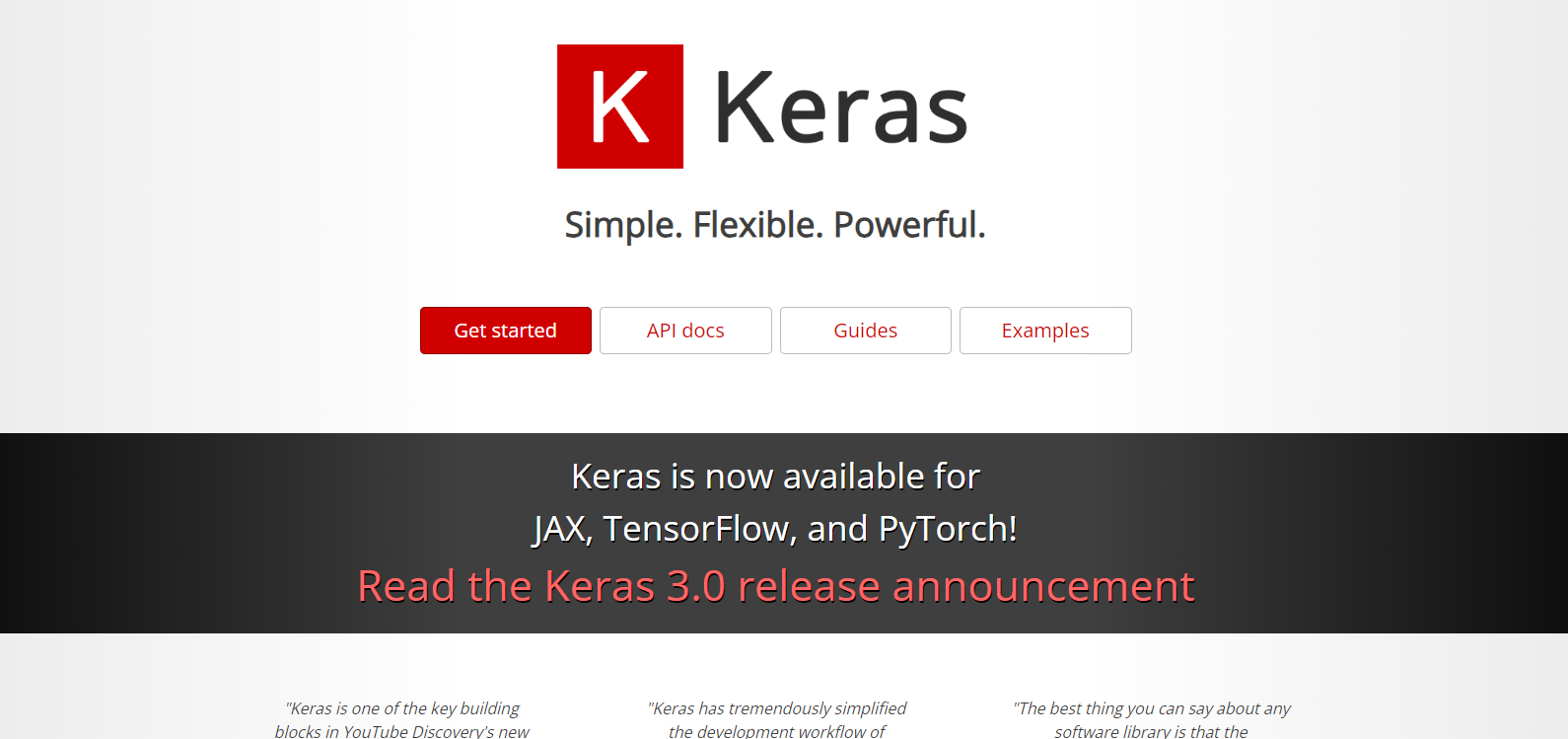
Keras is a user-friendly open-source library that simplifies building and deploying deep learning models. It acts as a high-level interface for powerful frameworks like TensorFlow, allowing developers to focus on the creative aspects of AI application development. Keras offers a clean and consistent API, making it easy to learn and use, even for beginners.
Key Features
- Easy to Learn
- Fast Prototyping
- Modular Design
- Extensive Community
- TensorFlow Integration
- Multi-platform Support
- Scalability
- Pre-built Applications
Apache MXNet
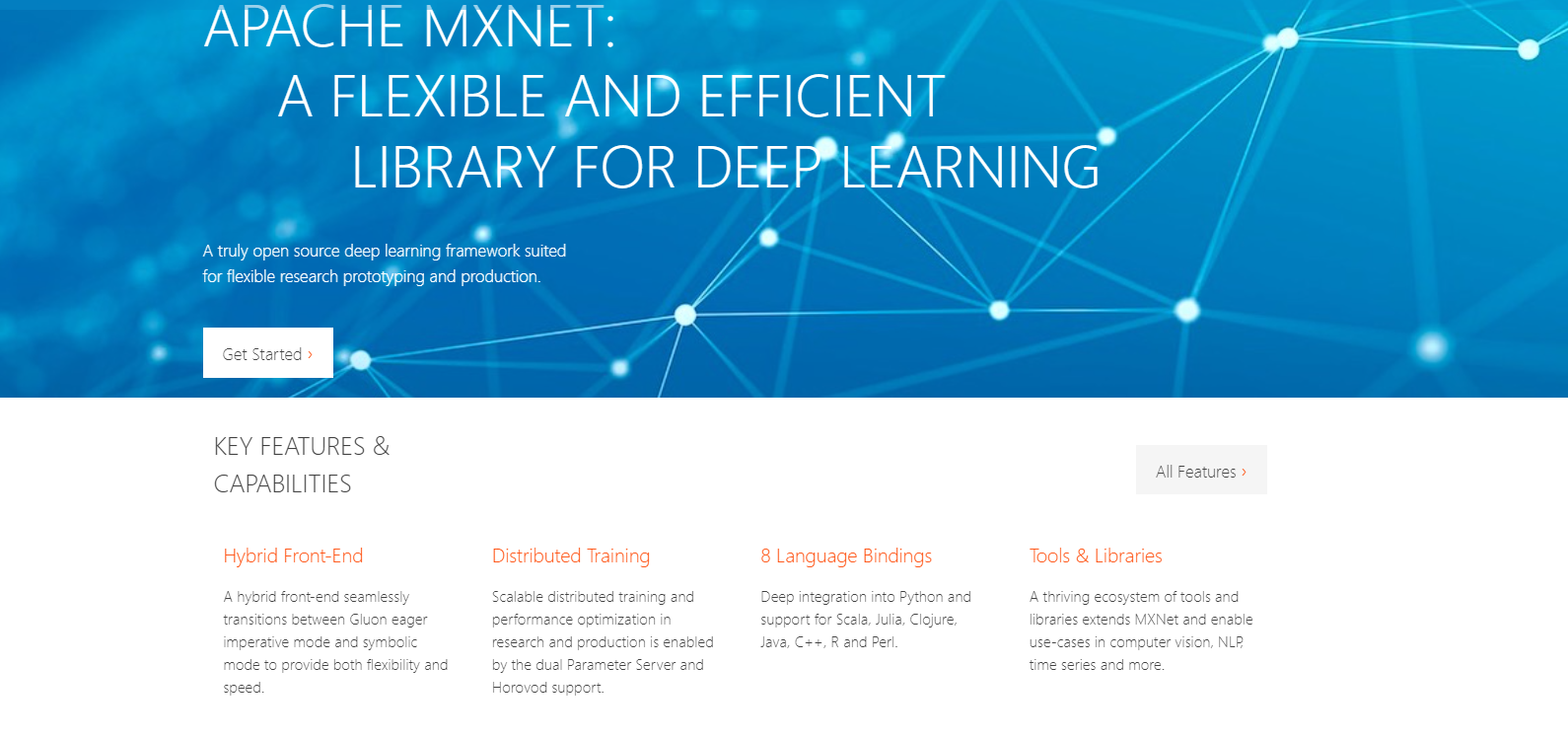
Apache MXNet is a versatile open-source deep learning framework designed for efficiency and flexibility. It empowers developers to create and deploy intelligent applications across various domains. MXNet stands out for its ability to seamlessly blend symbolic and imperative programming paradigms, allowing for both control and ease of use. This translates to faster development cycles and efficient model training, even on large datasets.
Key Features
- Multi-language Support
- Scalability
- Deployment Flexibility
- Pre-built Modules
- Dynamic Scheduling
- Community Driven
- Lightweight & Portable
- Gluon Interface
PyTorch
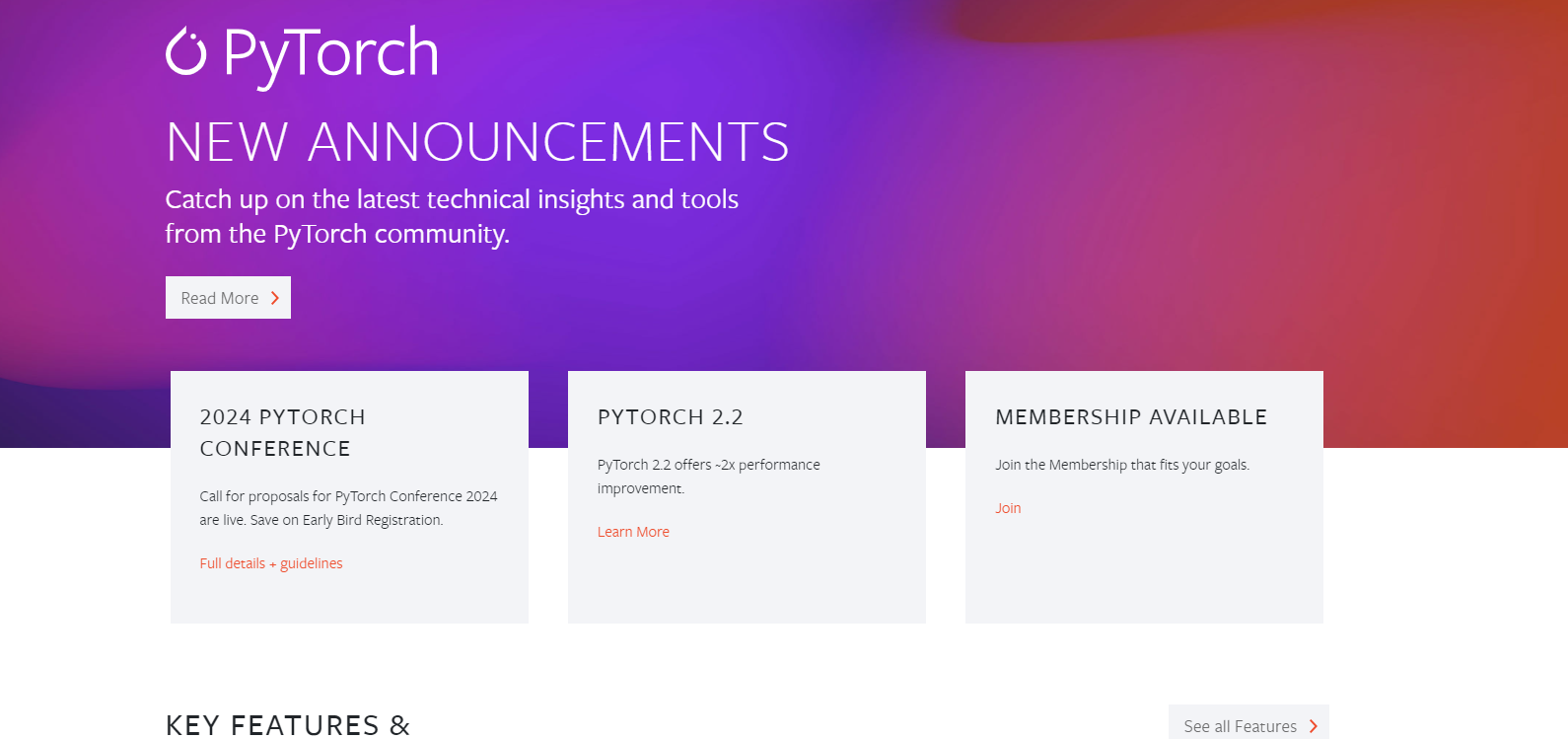
PyTorch has become a leading open-source framework for developing intelligent applications. Its popularity stems from its unique blend of power and flexibility. Unlike some frameworks with pre-defined structures, PyTorch offers a dynamic approach, allowing developers to build and customize models with ease. This flexibility makes it ideal for rapid prototyping and experimenting with new AI concepts. Additionally, PyTorch leverages the power of GPUs for faster training and execution, crucial for processing large datasets and deploying complex models.
Key Features
- Dynamic Computation Graphs
- Pythonic Interface
- Rich Ecosystem
- GPU Acceleration
- Automatic Differentiation
- Deployment Options
- Debugging Tools
- Community Support
Accord.NET
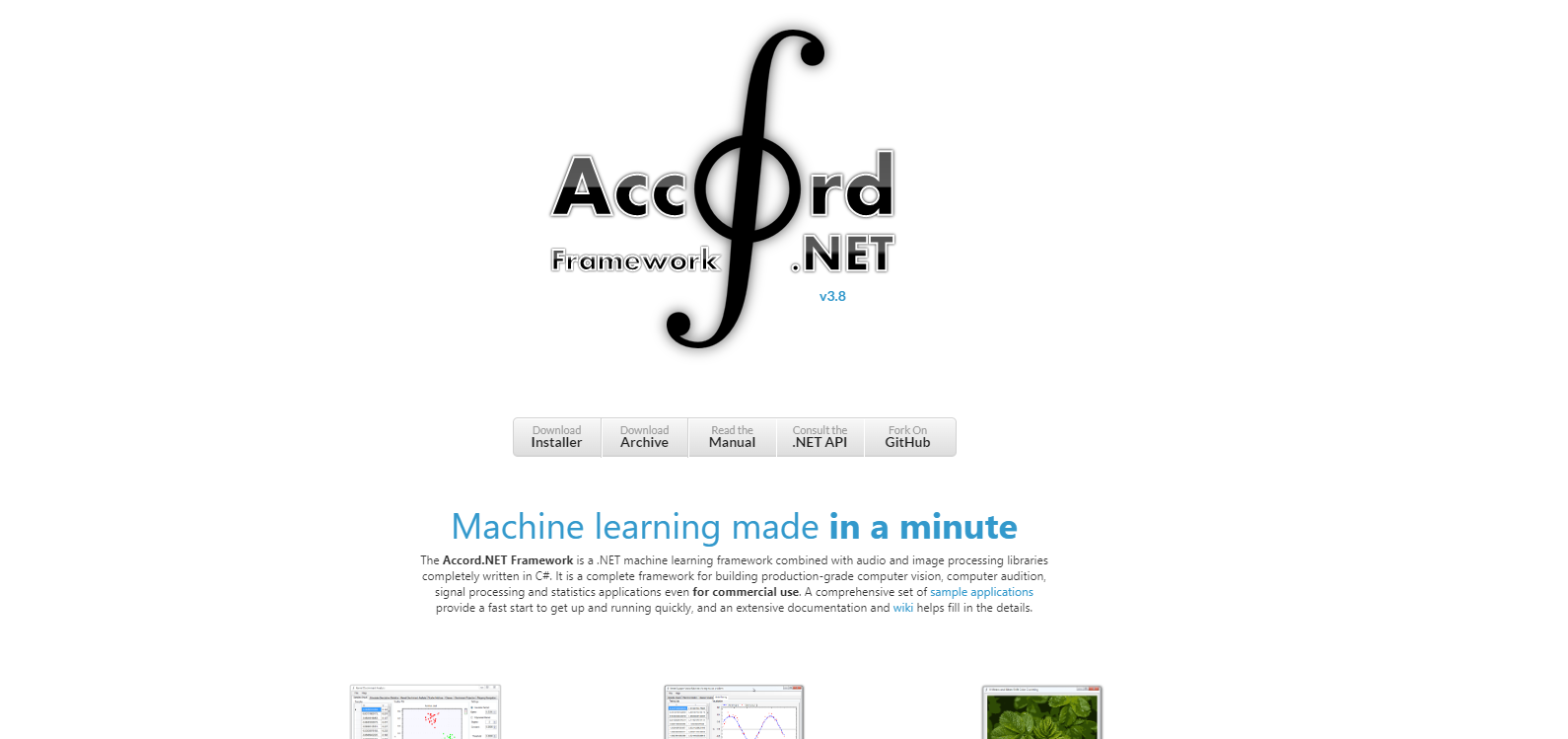
Accord.NET empowers developers to create intelligent applications by providing a comprehensive suite of tools for scientific computing and artificial intelligence within the .NET framework. This open-source library simplifies complex tasks like machine learning, computer vision, and signal processing, allowing developers to focus on building innovative features instead of getting bogged down in low-level coding. Accord.NET caters to various applications, from facial recognition software to stock market prediction models.
Key Features
- Machine Learning
- Computer Vision
- Signal Processing
- Statistics Support
- Easy Optimization
- Numerical Linear Algebra
- Visualization Enabled
- Cross-Platform
Theano
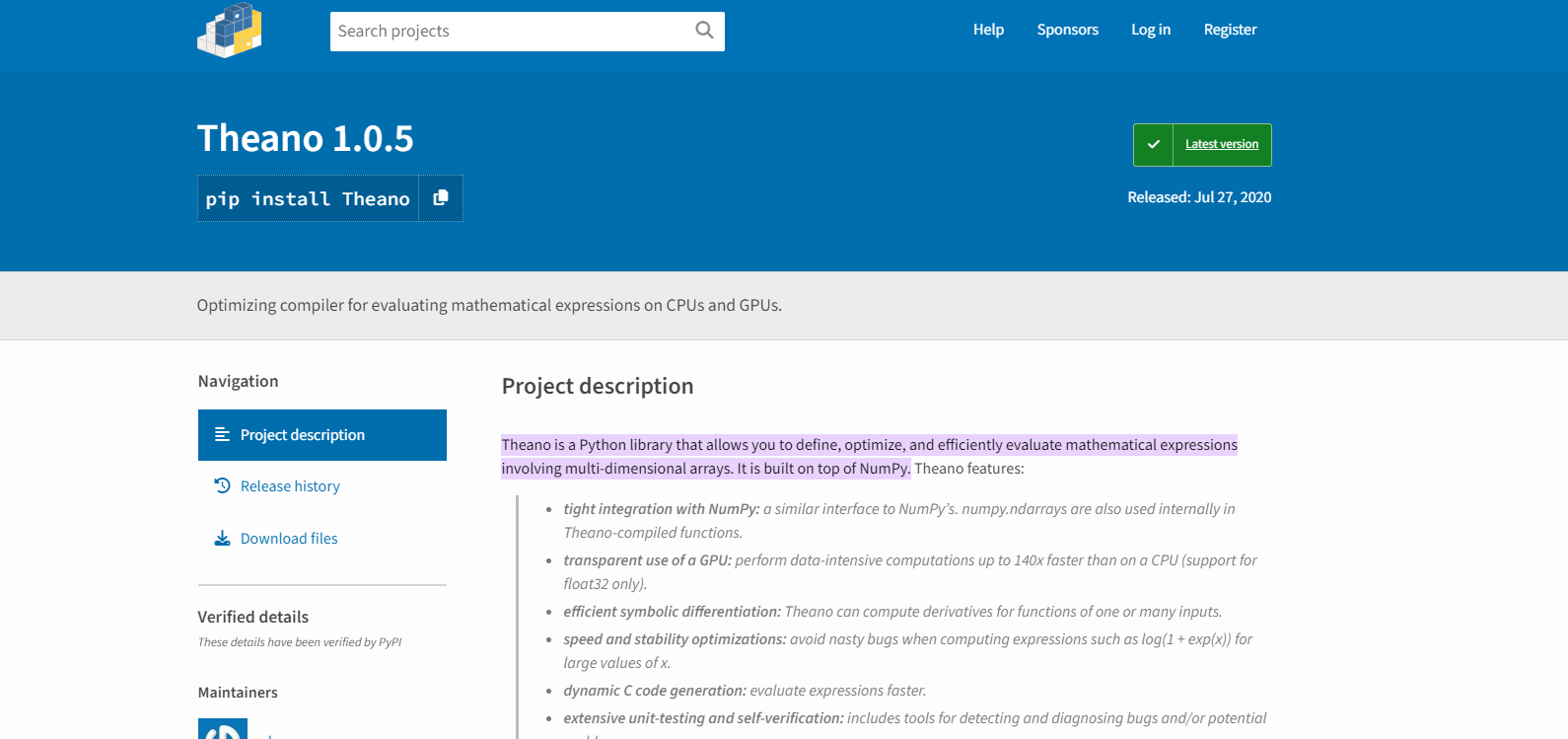
Theano, though not as widely used today, was once a prominent player in the realm of AI frameworks. Developed primarily for defining, optimizing, and evaluating mathematical expressions, Theano excelled at tasks involving multi-dimensional arrays, making it well-suited for machine learning and deep learning applications.
One of Theano's key strengths was its ability to leverage both CPUs and GPUs for computations, significantly speeding up training processes. Additionally, Theano offered a symbolic computation graph, allowing for automatic differentiation – a crucial step in training machine learning models.
While Theano has been largely superseded by frameworks like TensorFlow and PyTorch, it laid the groundwork for many of the advancements seen in deep learning today.
Key Features
- Symbolic computation graph
- Automatic Differentiation
- CPU and GPU support
- Multi-dimensional array handling
- Python-like syntax
- Extensive optimization capabilities
- Integration with scientific computing libraries
- Open-source and community-driven
FastAI

Fast AI is a non-profit organization that aims to make deep learning accessible to everyone. They achieve this by providing a user-friendly open-source deep learning library built on top of PyTorch. Fast AI streamlines the development process by offering high-level components that abstract away complex coding tasks. This allows developers of all experience levels to quickly build and train powerful deep-learning models for various applications, including image classification, natural language processing, and tabular data analysis.
Key Features
- High-Level APIs
- State-of-the-Art Results
- Mixed Training
- Data Augmentation
- Fine-Tuning
- Transfer Learning
- Learning Rate Finder
- Production-Ready Deployment
TensorRT
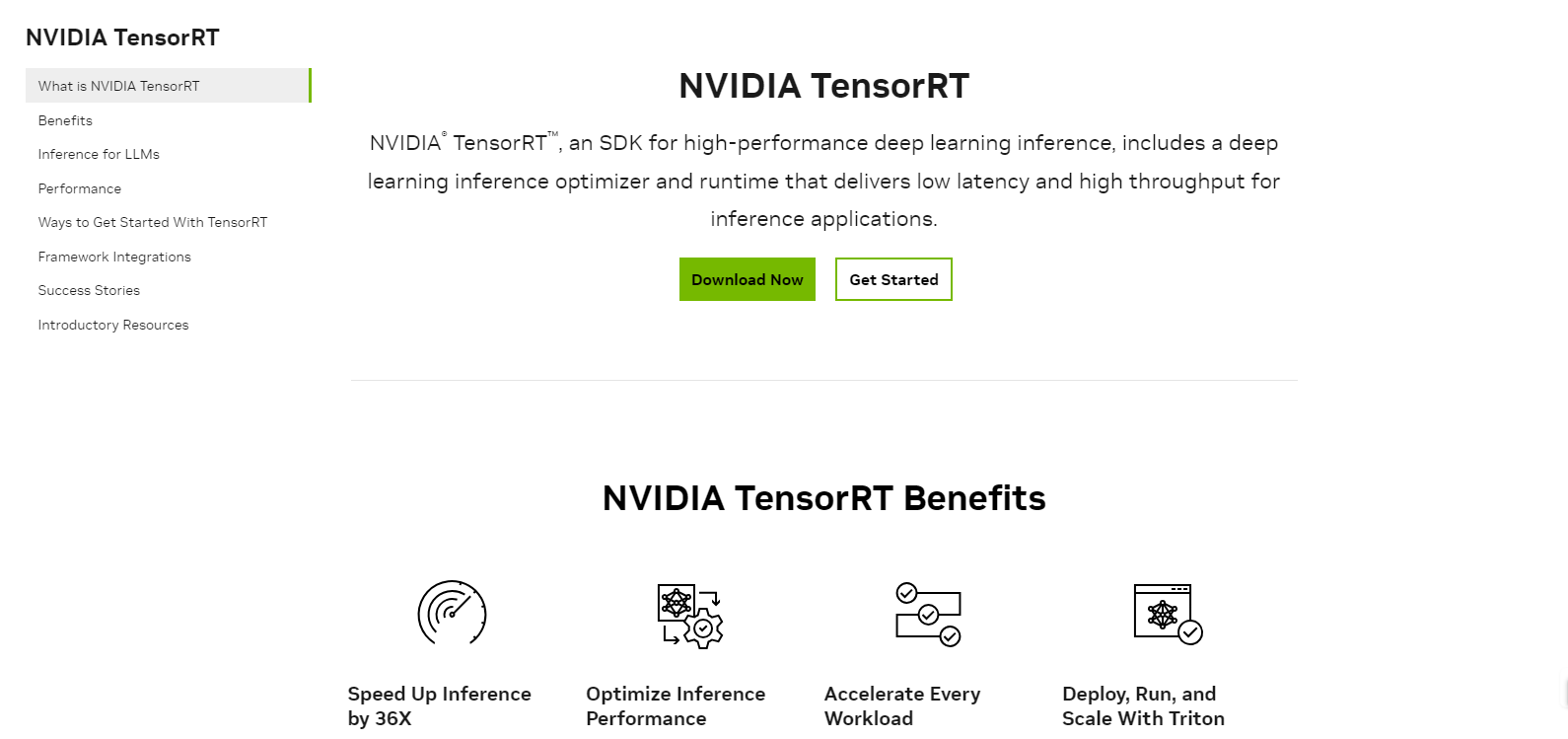
TensorRT isn't your typical AI development framework. Instead, it optimizes pre-trained deep learning models for blazing-fast inference on NVIDIA GPUs. Imagine training a powerful model for image recognition, but needing it to run smoothly on mobile devices. TensorRT steps in here, transforming your trained model for deployment on various platforms. TensorRT significantly reduces the model's size and computational needs by applying optimizations like quantization and layer fusion, making it perfect for real-world applications.
Key Features
- Faster inference
- Lower power consumption
- Smaller model size
- Multi-platform deployment
- Cloud-friendly
- Safety and security
- Easy integration
- Customizable
Wrapping Up
As an AI developer, I understand that choosing the right framework is crucial! There are so many options, and all you need to find the one that fits the project perfectly. Scalability, performance, flexibility, and how easily you can extend it are all big factors. By carefully considering these, you can pick the best framework to build and deploy powerful AI solutions that meet our specific business goals.












